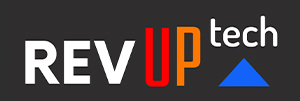Programming Basics Using Hyperledger Fabric
This five-day course provides a highly practical advanced blockchain training on Hyperledger Fabric. Every student gets experience in developing blockchain applications on Fabric. By the end of the course, the participant will design an application and learn how to integrate it with external file storages.
Course taught by an a Blockchain expert.
5 days - $2,995.00
Prerequisites:
Basic knowledge of Java, or JavaScript (syntax, control flow) is required.
Course Outline
Architecture of the Production-Grade Applications
Ordering mechanism:
Kafka-Orderer: how it works (theory)
Multi-host network setup with the Kafka-Orderer (practice)
Database choice: LevelDB vs. CouchDB (pros and cons, practical considerations)
MSP/CA integration with local credential store:
MSP/CA user authentication vs. API-managed user authentication
LDAP
Network Administration
Adding new orgs to a running network, excluding orgs from the network
Hyperledger Fabric version upgrade
Network productivity metrics, performance benchmarking and tuning
Parameters tuning by Kafka cluster design
Managing of Hyperledger containers
Security assurance
Troubleshooting
Chaincode Patterns Used in Popular Business Functions
Automotive supply chain: spare parts provenance and tracking chaincode (Golang)
National depository: bonds issuance and P2P transfer (Golang)
(Re)insurance: integration with external systems (Java)
Over-the-counter trading: implementation of “private collections” introduced in the HLF v1.2 (Golang)
License management platform: chaincode integration with the notification system (Golang)
Useful techniques
Interaction between chaincodes: read-only queries within a channel and between two channels, use case examples
Hyperledger Fabric events usage: events mechanism, use case examples
Difference between implementing chaincode in Golang and Node.js and best practices
Algorithmics: how to write efficient chaincode and avoid typical mistakes
Chaincode
Chaincode interaction with various types of data sources (including ERP and CRM systems)
On-chain / off-chain data
Push vs. pull scenarios for reading the external data by the chaincode
Chaincode version upgrade on a running network
Integration of Hyperledger Fabric with External Apps
Data feeds from oracles
Interaction with payments systems, e-commerce platforms
IoT and blockchain
Web and Mobile Interface as an Integral Part of a Blockchain Application
Integration of the UI with the blockchain layer: best practices


